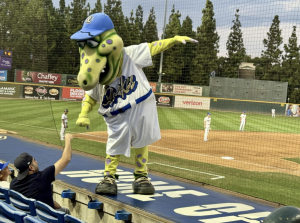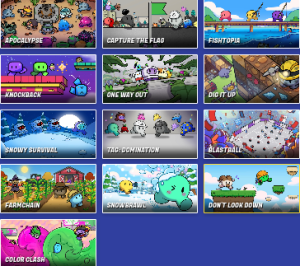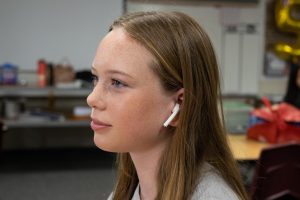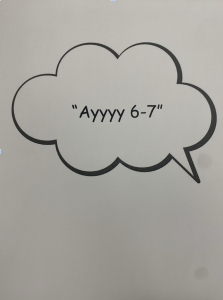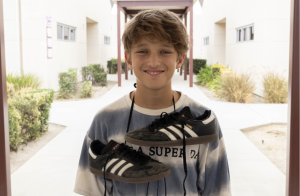Half a Heart Didn’t Stop Her
Carly Mason has a rare heart condition…And she’s still dancing.
December 16, 2019
She enters school, greets her friends and goes to class. Typical Day Creek student, right? Or so it seems.
Except she has half a heart.
Carlie M., an eighth grade student, has a medical condition called Tricuspid Atresia. Tricuspid Atresia is a rare heart defect that was detected in an early ultrasound.
According to MedlinePlus, “Tricuspid Atresia is a type of heart disease that is present at birth, in which the tricuspid heart valve is missing or abnormally developed.”
“I have had four open-heart surgeries. My first open heart surgery was when I was four days old. My second and third open-heart surgeries were to take my deoxygenated blood and separate it so that my body would receive the oxygenated blood that it needed. My most recent surgery was in fifth grade because my mitral valve was leaking and needed to be repaired.” says Carlie.
“Usually the defect is found when [kids] are very young, so if they’re going to do a procedure, it is generally pretty early in their life. There are a few procedures depending on the stage. When they saw that she didn’t have enough oxygenated blood, they had to do a procedure where they implanted a kind of ‘shunt.’ Because of the way the blood flows and because of this particular defect or malformation, you don’t have the communication between the right atrium and the right ventricle,“ said family nurse practitioner Christine Dang.
Carlie’s day-to-day schedule is affected by her condition. “I have to take medication every day and night,” Carlie said. “I have to be careful with what I do.”
Although Carlie’s condition is serious, she lives a completely normal teenage life. She participates in dance classes at Elevate Dance Studio. Dancing is challenging as it is, but doing so with half a heart is certainly an impressive feat. Initially, doctors told her it was unlikely that she’d be able to participate in recreational sports, let alone dance, with her condition. However, she has a passion for her craft and pursued it despite the apparent risks.
“Once you have something like this, you definitely need to be monitored very, very closely. And there are signs, that’s where the activity, everything that they do, you just have to make sure that they can tolerate certain things. It’s good that she is as active as she is,” says Dang.
Surprisingly, some of Carlie’s peers have had a hard time understanding the reality of her condition. While there’s sympathy, some don’t fully connect with how real things are for her.
“They didn’t believe me, but when they did [understand], they were really shocked,” said Carlie.
Through the ups and downs of Carlie’s experience, the story sets an inspiring example for all.
“I want to thank my mom, my doctors, and all my nurses. My teachers really encouraged me to keep dancing. They always knew I could do it.”



